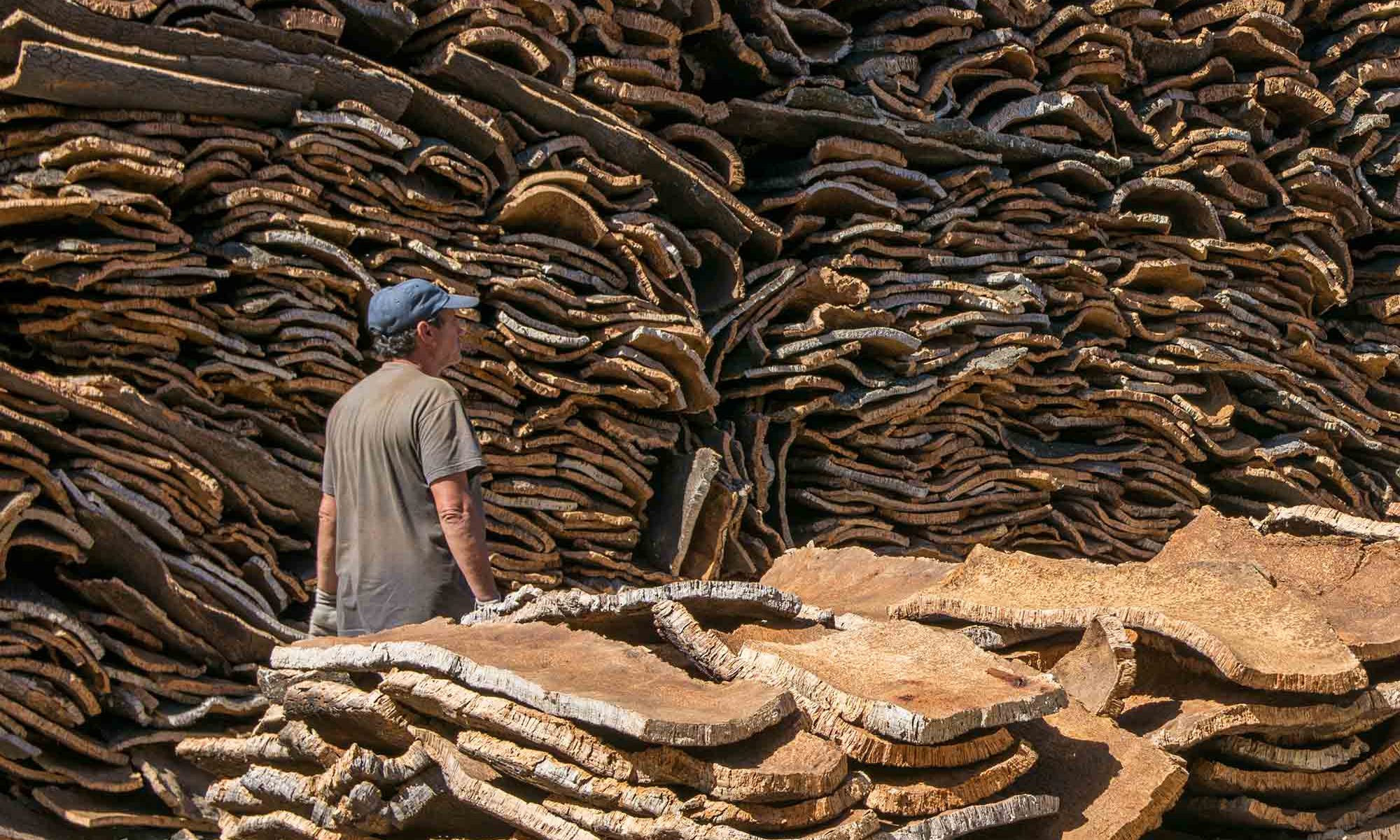Portuguese cork, a world-class product
What do you know about Portuguese cork?
The cork stopper is the first thing we see when we open a bottle of good wine, and there is a 50% chance of it being a Portuguese cork.
A bottle of good wine requires a top-quality cork stopper. The cork’s physical characteristics and the sobriety and distinction it adds to the wine are essential.
However, cork has vast applications beyond stoppers.
Nowadays, we find cork used in footwear, clothing, mechanical joints, thermal insulation, acoustic insulation, flooring, steering wheel covers, mobile phone covers, etc.
Please note that Cork has a very discreet but classy presence.

Have you ever wondered where cork comes from?
Well, Portuguese cork is one of the topics that generate the most questions during my tours, alongside questions about wine.
It indicates a specific knowledge about Portugal, considering cork is one of the country’s most important products.
Allow me to present some quantitative data to explain the importance of cork in Portugal and the world:
- Portugal produces 49.6% of the world’s cork (100,000 tons, 2010).
- Portugal exports € 985.2 million out of a total of € 1578.2 million, representing 62.4% of the world cork market share.
- The cork oak is Portugal’s second most prevalent tree, occupying 23% of the forested areas in 2010.
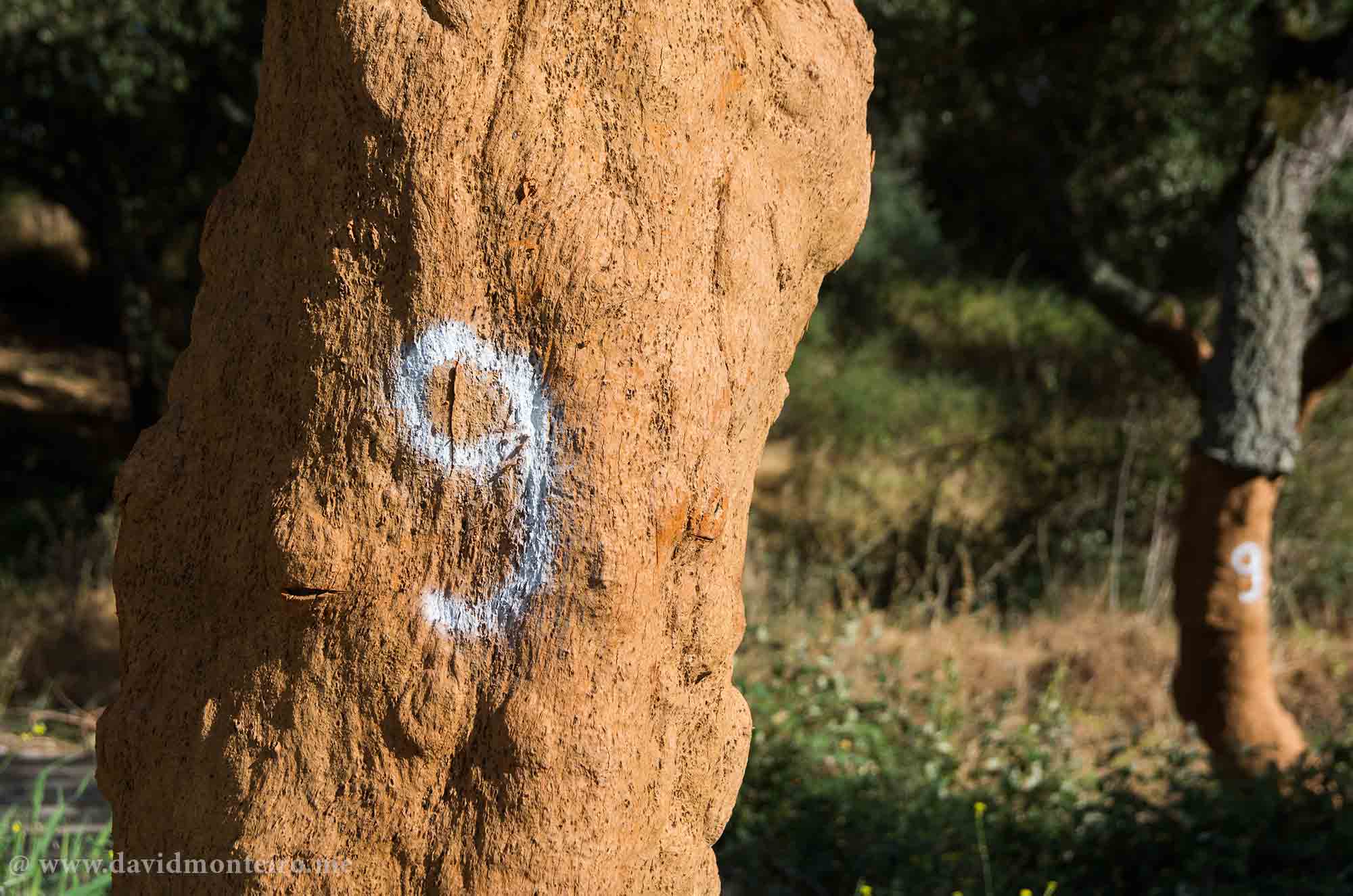
How is cork made from the cork oak?
I will outline the essential sequence from planting cork oak trees to producing cork stoppers.
However, I need to separate it into four sections: the “montado,” the cork oak, the cork, and the cork stopper.

What is a “montado”
The “montado,” predominantly found in Portugal’s southern region of Alentejo, comprises an ecosystem where cork oaks, holm oaks, livestock, various bird species, and cereal plantations coexist.
It significantly influences Portuguese culture, shaping lifestyle, gastronomy, and traditional music.
Despite its prevalence in Alentejo, cork oaks also thrive in scattered areas across the country.
Notably, the “montado” fosters biodiversity and sustains vital agricultural practices.
During winters, it evokes nostalgia with its golden cereal fields and warm breezes.
Cattle like Alentejo sheep, Mertolenga cows, and black pigs forage on cork oak acorns, enhancing local delicacies. However, not all cork oak clusters constitute a “montado.”
Those lacking a comprehensive ecosystem are termed “sobreiral.”
These areas lack biodiversity and often have trees planted closer together for more intensive cropping.
Despite variations, the “montado” remains integral to Portugal’s identity and environmental sustainability.
It symbolizes the harmonious coexistence of nature and human activity, preserving traditions while supporting modern agricultural practices.
As visitors explore the “montado,” they encounter painted numbers on cork oak trees, marking the last cork stripping year—a testament to its enduring importance and cyclical nature.
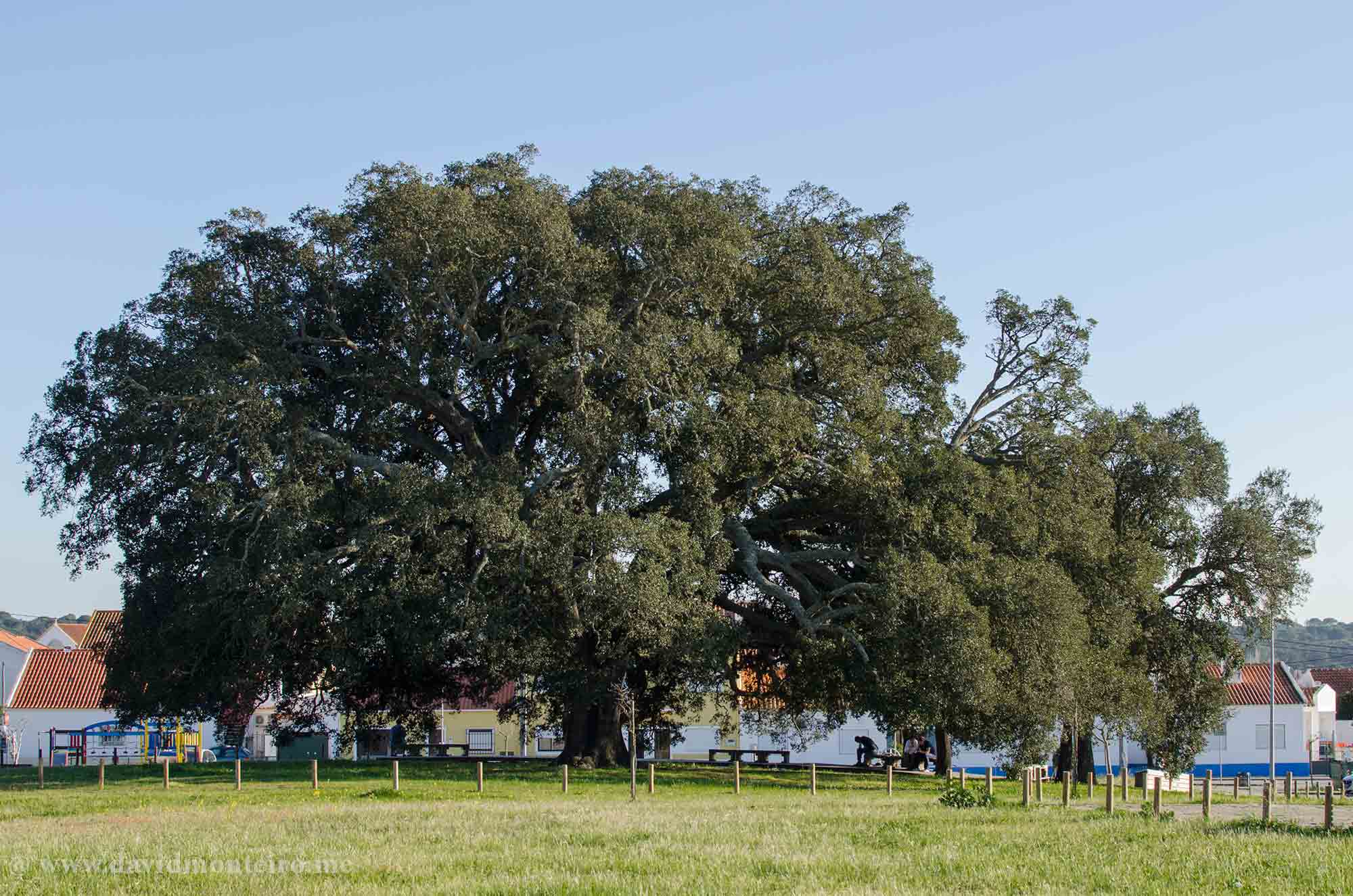
Facts about cork oaks
The cork oak, scientifically known as Quercus suber, is an oak family tree.
Like other oaks, it bears acorns, which black pigs feed on, enhancing pork taste.
These medium-sized trees, about 15 meters high and never more than 25 meters, can live for 200 years or more.
The oldest cork oak in the world is in Portugal, in Águas de Moura village, called Whistler, or Sobreiro Assobiador in Portuguese, due to the numerous birds often found there.
Whistler was planted in 1783 and stands over 14 meters high.
2018, this Portuguese cork oak won the European distinction of “The Tree Of The Year.”
Since 1820, this cork oak has been stripped about twenty times. In 1991 alone, 1,200 kg of cork was removed, yielding over 100,000 cork stoppers.

Portuguese cork production
The outer layer of the cork oak trunk consists of dead plant cells, known as cork.
Removing cork from the tree does not harm it; it is comparable to trimming nails for humans.
Cork extraction is exclusive to cork oaks.
The process of cork growth is lengthy.
In Portugal, it is believed that cork harvesting from self-planted trees is rare. This is because of the following reasons.
The first stripping occurs when the tree reaches 25 years of age, provided its trunk perimeter is at least 70 cm at a height of 1.3 m from the ground. This yields cork known as “virgin,” with low commercial value.
At 34 years, the second stripping takes place, nine years after the initial one. Although not suitable for cork stoppers, this cork is ideal for granules and other products, termed as “secundeira” or the second one.
Subsequent strippings occur every nine years from the age of 43 and onwards. This cork, known as “amadia” or reproduction cork, possesses the quality required for cork stoppers or other cork products.
Following this, cork-stopper production begins.
Before delving into this, let’s discuss the stripping process.
Stripping cork oaks remains a manual process, with no foreseeable replacement with machinery.
It involves skillfully using an ax to remove large cork boards, done during the hot period from mid-May to late August when temperatures can reach up to 45º C.
The boards are then transported to the factory, where they are boiled to remove impurities and flattened for calibration before being used in production.
Different products are manufactured based on the quality of the boards.
Though I can’t detail all cork products here, let’s focus on cork stoppers. Additionally, I’ve included some informative links for further exploration.
Shuttle’s Cork From Portugal
Foam and Cork Insulation Protects Deep Space Rocket from Fire and Ice
How durable is cork fabric?
How Cork Fabric Is Produced
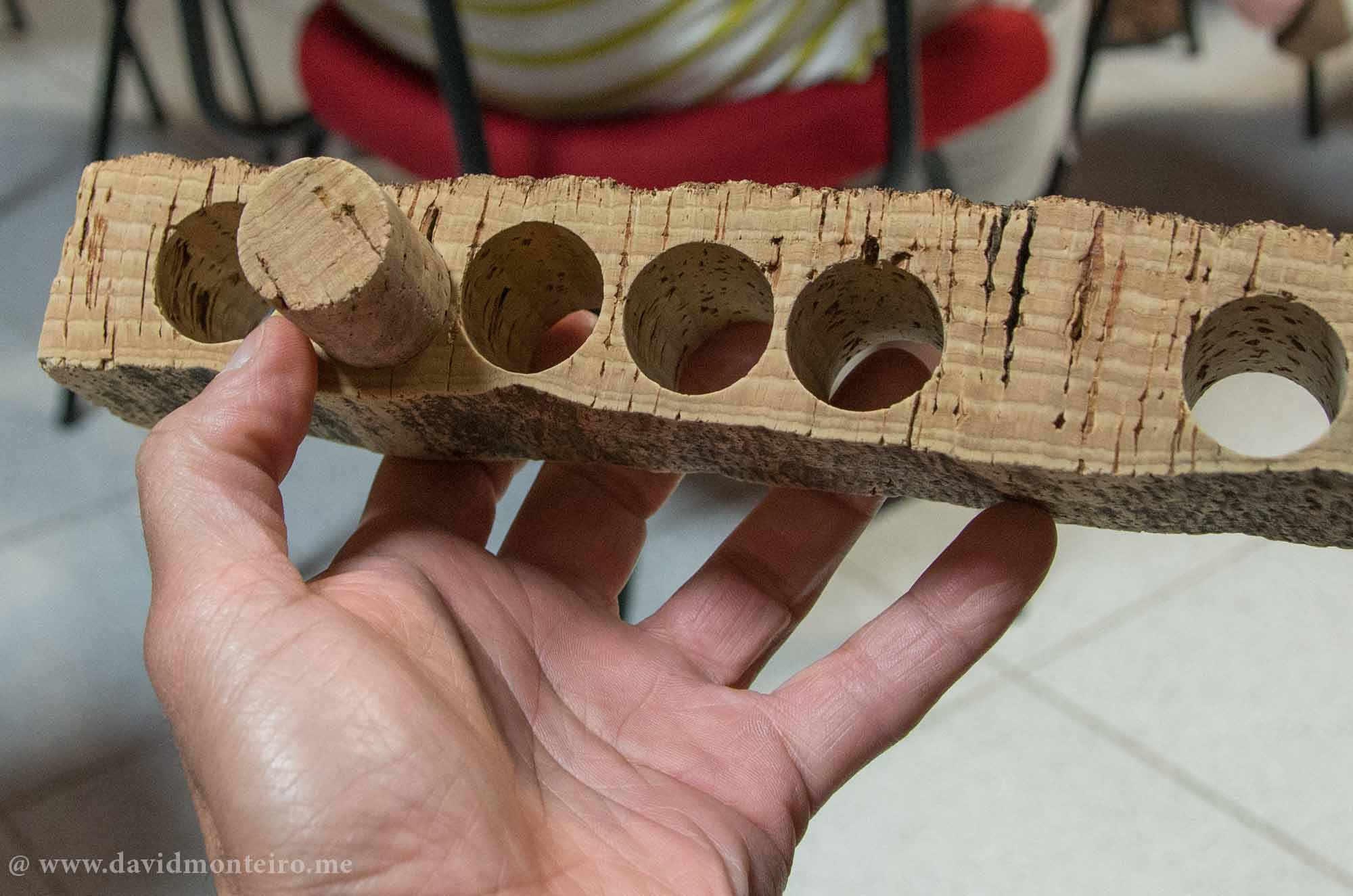
Cork Stoppers market
In 2016, Portugal’s cork industry generated a turnover of €1,466 million, with €785 million attributed to the manufacturing of cork stoppers, constituting 53.5% of the cork market in Portugal.
Yes, astonishing!
Did you know that cork stoppers were initially crafted from rectangular cork pieces, which were then manually adjusted to the desired diameter?
It wasn’t until the early 20th century that the machine, known as Galorpa, was invented for this purpose, initiating industrial production of stoppers.
While I won’t delve into the entire production process, two steps stand out:
- Visual selection. Although each cork stopper undergoes electronic inspection, human discernment is crucial in determining their quality.
- Marking is also vital. Each cork stopper is branded with ink or fire, bearing the distinctive mark of the customer, ensuring the wine’s authenticity upon opening. Now you understand why the sommelier presents you with the cork stopper after opening an expensive bottle of wine.
The well-known commercial threat posed by plastic, rubber stoppers, and metal caps to the cork stopper market persists.
While artificial stoppers are increasingly prevalent in less expensive wines and in many countries, this trend has yet to catch on in Portugal.
However, some cork alternatives, such as the Helix system by Corticeira Amorim, are being introduced to compete against artificial corks, for which I extend my sincerest wishes for success.

The environmental impact
This section may offer many pleasant surprises.
In an era where the world is increasingly attentive to environmental concerns, understanding how each industry contributes to reducing its ecological footprint is crucial.
The Portuguese cork industry’s contribution couldn’t be more significant, as it absorbs more carbon from the environment than it produces.
According to a document by Corticeira Amorim, the largest cork company in Portugal:
- The worldwide scientific community acknowledges that greenhouse gas emissions cause global warming.
- Forests play a crucial role in combating this phenomenon by absorbing carbon dioxide through photosynthesis, storing it in trees and soil.
- The long lifespan of cork oak trees makes them particularly effective at storing carbon.
- Studies comparing cork stoppers to alternatives like aluminum and plastic show that cork is the most environmentally friendly choice, minimizing carbon footprint.
- Cork oak forests have the remarkable ability to absorb 14.7 tons of CO2 per hectare, with the Western Mediterranean alone storing around 30.66 million tons of CO2.
You can download this document here.
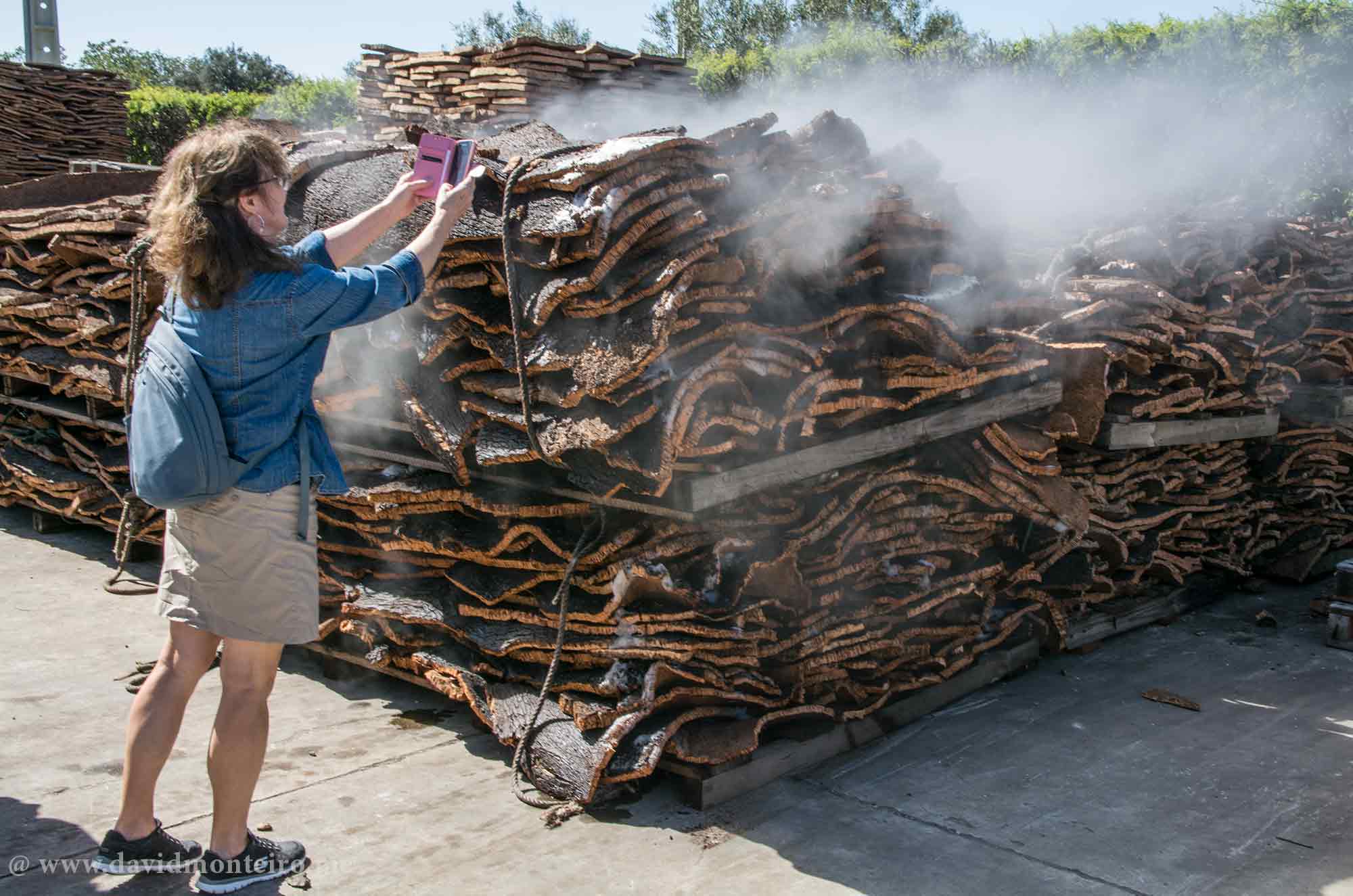
To conclude about Portuguese cork
To conclude this subject, I’d like to recommend one of the best documentaries I’ve encountered: “BBC Cork Forest in a Bottle.“
I hope my insights have contributed to enhancing your understanding of Portuguese cork and helped you appreciate the cork products available for purchase in Portugal.
Carpe diem,
David Monteiro

